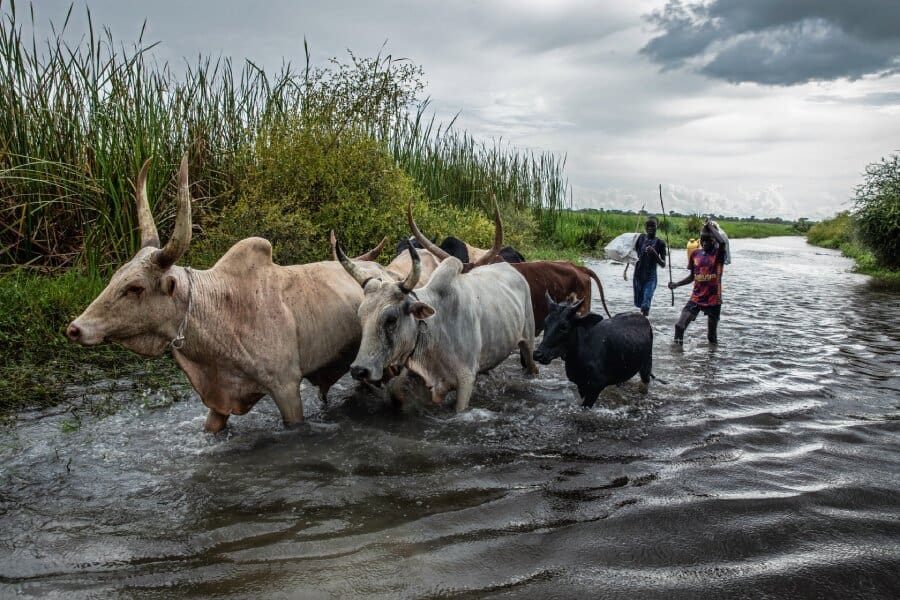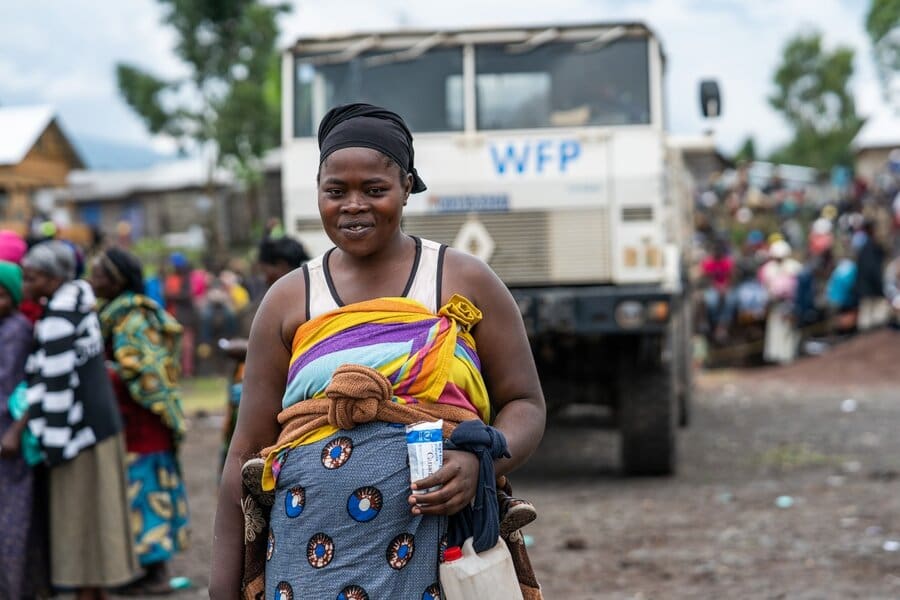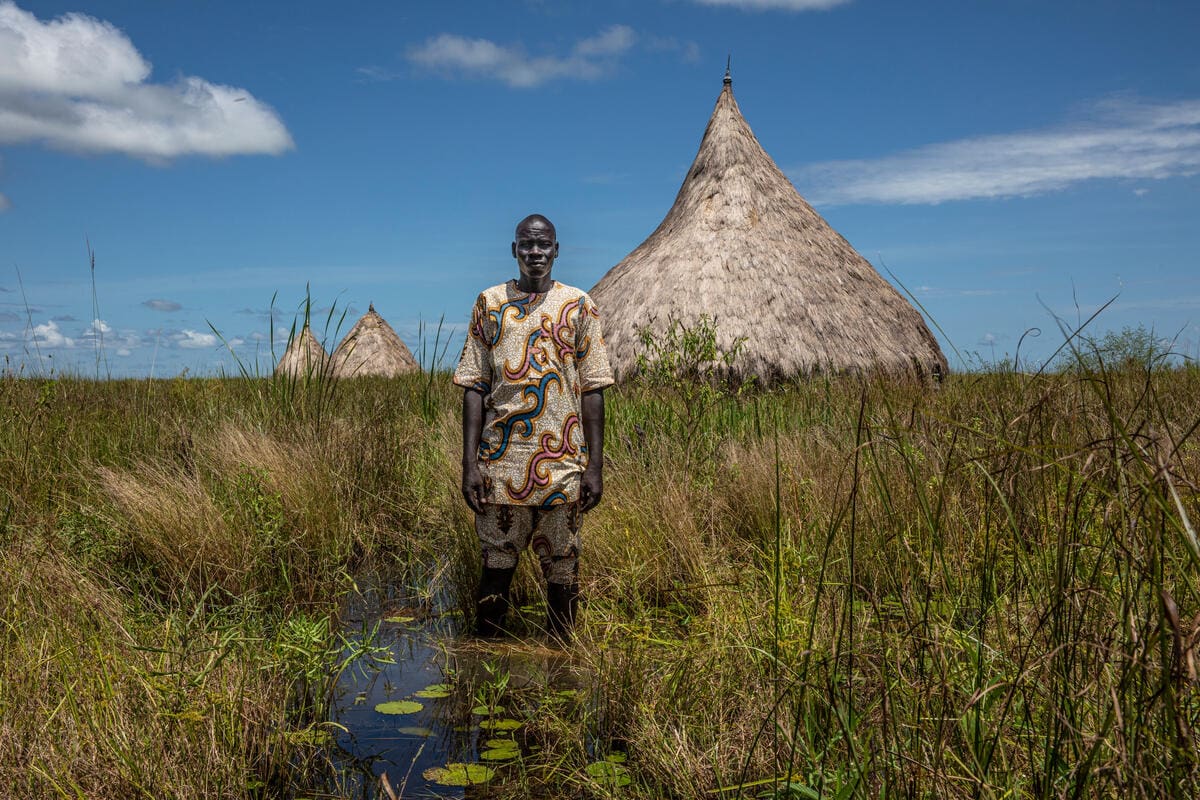A Papal Visit to Two of the Hungriest Places on Earth

Today, Pope Francis begins his visit to two of the world’s worst hunger crises: the Democratic Republic of Congo (DRC) and South Sudan. He will spend three days in Kinshasa and two days in Juba. His visit comes at a time when the United Nations World Food Programme (WFP) faces growing demands and shrinking funds to reach millions facing severe hunger in these countries.
A Vicious Cycle of Conflict and Hunger in the DRC
In the DRC, unrest has contributed to alarming – and sometimes catastrophic – levels of hunger. More than 26 million people face severe hunger. The U.N. World Food Programme reached over 5 million of the most vulnerable in 2022, focusing especially on conflict-affected women and children. Many, like Dorati Ndagisa, are in the country’s northeast where clashes have forced more than half a million people from their homes in recent months.

Dorati Ndagisa is grateful for the U.N. World Food Programme’s food assistance but feels helpless about DRC’s ongoing conflict.
“We have a lot of hunger, but we are helpless in this situation,” says Dorati. Chased by armed groups from her farm, Dorati and her five children now live in the Kanyaruchinya displacement camp and receive support from the U.N. World Food Programme. “Before, I was a farmer and I had a stable life,” says Dorati. “Since the war I have nothing, and I don’t know how to feed my children.”
Pope Francis is expected to hear many stories like Dorati’s when he meets conflict survivors in Kinshasa. He will also deliver an open-air mass at Kinshasa’s Ndolo airport. Over 1 million Congolese are likely to attend.
“I expect his visit to bring us strength,” says Kinshasa University student Calixte Muluvia. “It would be good if he could tell the world about the humanitarian situation many families are facing in the east,” she adds.

The sprawling Kanyaruchinya camp in eastern DRC hosts people displaced by conflict.
In South Sudan, Conflict and the Climate Crisis Drive Millions into Extreme Hunger
South Sudan is on the frontlines of the climate crisis. Families are reeling from four consecutive years of flooding on top of escalating conflict. Recent surges of violence impacted areas of the country where people were already facing the worst forms of hunger.
“Conflict and hunger are closely linked, and we hope the Pope’s visit puts some much-needed momentum behind the peace process in South Sudan,” says Mary-Ellen McGroarty, U.N. World Food Programme country director for South Sudan. “Needs continue to outpace resources, and peace is a critical prerequisite to preventing famine, building future food security and unlocking the full potential of South Sudan.”

Leer County in South Sudan has been hit by four consecutive years of flooding as well as ongoing conflict.
The pope’s visit is significant for many in South Sudan as the Catholic Church has helped to foster peace in conflict-affected regions. That includes in Leer County, in central South Sudan, where violence uprooted thousands of families in 2022. Many sought U.N. World Food Programme food assistance in internally displaced camps.
“It started with the fighting. We were chased up to the rivers and our cattle were taken,” says Theresa Nyaluide, a mother of 10. With her children, Theresa fled their home in Leer County and found temporary shelter in a town called Thonyor.

South Sudan is on the frontlines of the climate crisis. An unprecedented, multi-year flooding event is sweeping the nation.
Along with delivering essential food and nutritional assistance, the U.N. World Food Programme helps conflict- and climate-affected communities build long-term food security. We work with communities to build shared agricultural resources like ponds and flood walls. These activities promote social cohesion and prevent clashes between pastoralists and landowners over resources like water and land.
“We just look to the U.N. World Food Programme to help us,” says Theresa. “We can and will live because of it.”
Members of Theresa’s community are traveling to Juba, some 250 miles away, for a chance to see the pope.
~
In both capitals, the pope is expected to meet with conflict-displaced people. “Think of all those, especially children, who go hungry, while huge amounts of food daily go to waste and resources are being spent on weapons,” Pope Francis said in his Christmas day message, describing how the war in Ukraine had put “whole peoples at risk of famine.”
This blog originally appeared on WFP’s Stories on January 27, 2023. It was written by Shelley Thakral and Gemma Snowdon.




